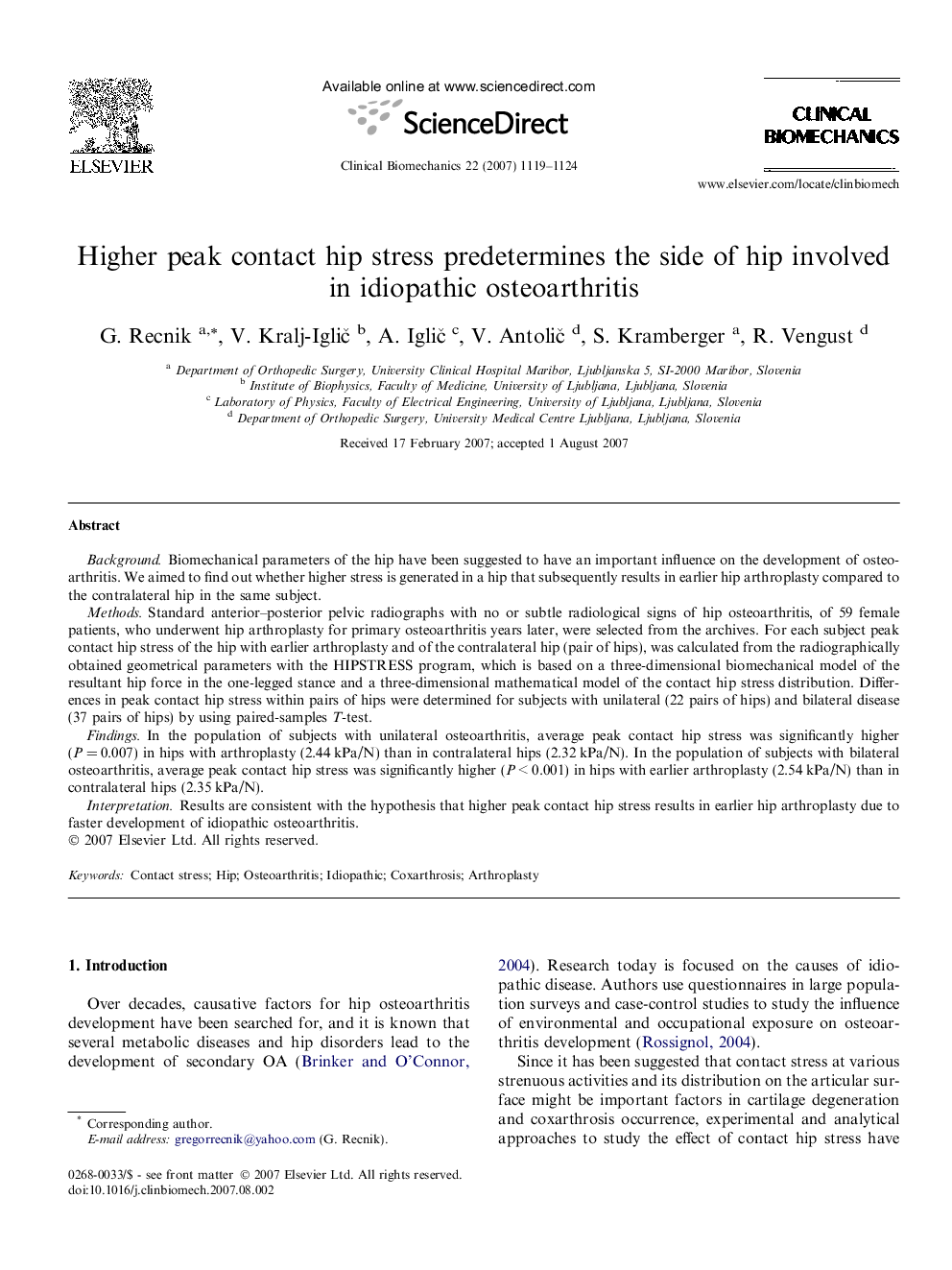| Article ID | Journal | Published Year | Pages | File Type |
|---|---|---|---|---|
| 4051726 | Clinical Biomechanics | 2007 | 6 Pages |
BackgroundBiomechanical parameters of the hip have been suggested to have an important influence on the development of osteoarthritis. We aimed to find out whether higher stress is generated in a hip that subsequently results in earlier hip arthroplasty compared to the contralateral hip in the same subject.MethodsStandard anterior–posterior pelvic radiographs with no or subtle radiological signs of hip osteoarthritis, of 59 female patients, who underwent hip arthroplasty for primary osteoarthritis years later, were selected from the archives. For each subject peak contact hip stress of the hip with earlier arthroplasty and of the contralateral hip (pair of hips), was calculated from the radiographically obtained geometrical parameters with the HIPSTRESS program, which is based on a three-dimensional biomechanical model of the resultant hip force in the one-legged stance and a three-dimensional mathematical model of the contact hip stress distribution. Differences in peak contact hip stress within pairs of hips were determined for subjects with unilateral (22 pairs of hips) and bilateral disease (37 pairs of hips) by using paired-samples T-test.FindingsIn the population of subjects with unilateral osteoarthritis, average peak contact hip stress was significantly higher (P = 0.007) in hips with arthroplasty (2.44 kPa/N) than in contralateral hips (2.32 kPa/N). In the population of subjects with bilateral osteoarthritis, average peak contact hip stress was significantly higher (P < 0.001) in hips with earlier arthroplasty (2.54 kPa/N) than in contralateral hips (2.35 kPa/N).InterpretationResults are consistent with the hypothesis that higher peak contact hip stress results in earlier hip arthroplasty due to faster development of idiopathic osteoarthritis.
